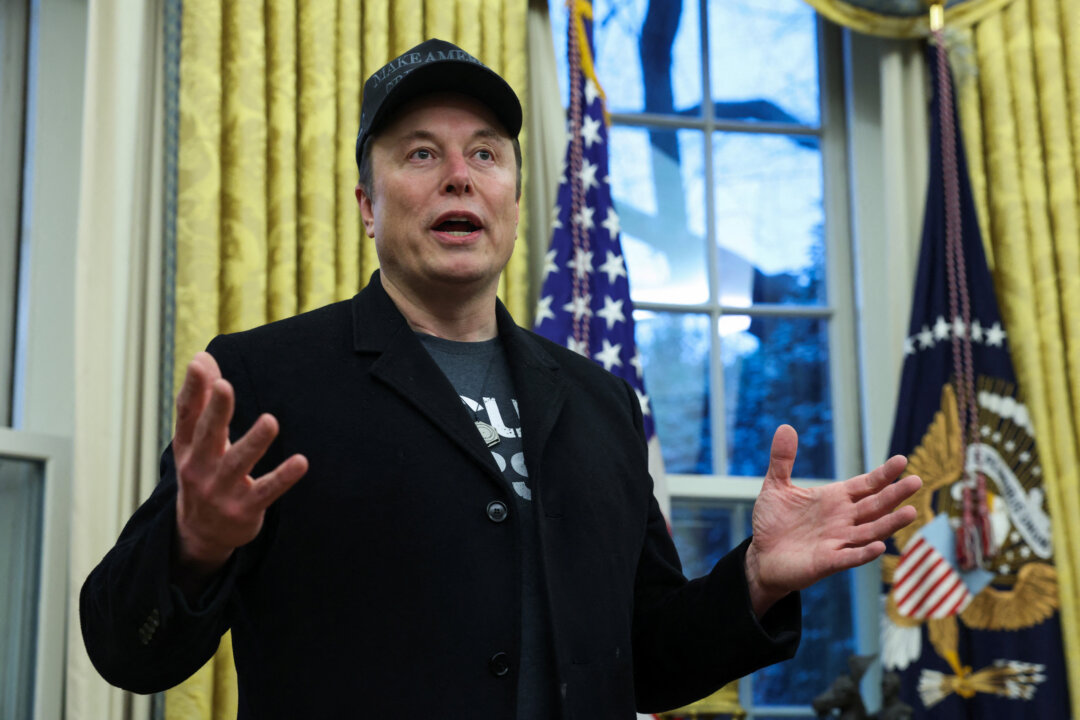Musk said many government systems are running on old software and need to be updated.
Elon Musk said on Wednesday that he is providing tech support to the White House, while criticizing outdated U.S. government systems and software that he said lack efficiency.
Musk made the comments during a virtual appearance at the World Governments Summit in Dubai alongside the United Arab Emirates’s artificial intelligence (AI) minister, Omar Al Olama.
The tech billionaire—who heads the advisory committee known as the Department of Government Efficiency (DOGE) under the Trump administration—was dressed in a “Tech Support” t-shirt for the occasion.
When asked how he plans to make the government more efficient, Musk said one part of his role will be focused on improving outdated technology used by the executive branch.
“A shocking percentage of the problem—or maybe not shocking to those who know it—a big percentage of the problem is improving the technology that the government runs on,” Musk said.
“The U.S. government runs on a collection of thousands of computers, many of them antiquated, running on very old software, and the computers don’t talk to each other. That’s why tech support is kind of a real thing, in order to make the government more efficient you have to improve the technology.”
He told the summit that the current retirement rate among federal employees is limited to 10,000 a month, largely due to the sheer amount of paperwork associated with leaving and how it is stored and handled.
“Right now it’s manually calculated paperwork that’s put in an envelope and then taken down a mine shaft and stored in a mine,” Musk said. “One of the things that affects the rate at which federal workers can retire is the speed of the elevator in a mine in Pennsylvania, which is bizarre because it should be digital.”
Musk, the world’s richest man, said he had been informed that the U.S. government has been working toward digitization since 2014 but that it is yet to make sufficient progress.
“So I’m like, ‘We’re going to really need to provide some tech support here otherwise, literally, people can’t even retire, even if they want to,’” Musk stated.
He said a lot of software systems used by the government will need to be updated and fixed while others may need to be completely automated or removed altogether. This, he said, will also help to reduce unnecessary government spending, which is one of DOGE’s main goals.Musk also spoke to reporters alongside Trump at the White House Oval Office on Tuesday.
During that visit, Musk, who was joined by his 4-year-old son, X, addressed questions regarding any possible conflicts of interest between his role in reshaping the government as head of DOGE and his stakes in electric vehicle company Tesla and U.S. space technology company SpaceX, which is a major aerospace contractor for the U.S. government.
“Transparency is what builds trust,” Musk told reporters at the White House.
He said the general public can see everything he is doing with DOGE via continuous updates on X and the DOGE website and that they can assess, themselves, whether or not that work benefits him or his companies.
Trump followed up on Musk’s remarks by stating that the government would not allow Musk to “do that segment or look in that area if there was a lack of transparency or conflict of interest.”
DOGE is currently facing multiple lawsuits from Democrats and progressive groups, including one regarding its access to Treasury Department payment systems data.
That legal challenge, filed by a coalition of 14 state attorneys general, alleges DOGE lacks authority to access the systems and that the move violates the law and poses a massive cybersecurity and privacy risk.
A Manhattan judge has temporarily blocked DOGE employees from looking at that data and ordered them to destroy any data they may have obtained so far.
Other lawsuits have been filed in recent weeks challenging Trump’s executive actions, including his efforts to freeze payments for federal programs and end automatic citizenship for children born to illegal immigrants on U.S. soil.
Jacob Burg contributed to this report.

